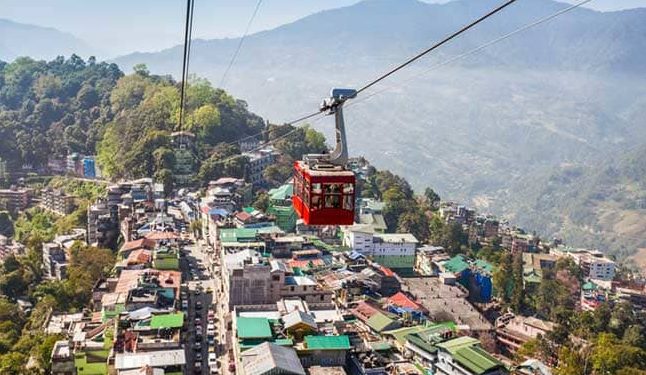J&K set to get one or two projects initially
Will improve connectivity, promote tourism
Sanjeev Pargal
JAMMU, Feb 8: The Central Government has announced construction of eight ropeway projects involving a total length of 60 kilometres during upcoming financial year of 2022-23 under `Parvatmala’–a National Ropeways Development Programme–announced by Union Finance Minister Nirmala Sitharaman in her budget speech followed by Prime Minister Narendra Modi for the States/UT including Jammu and Kashmir, Himachal Pradesh, Uttarakhand, Manipur and other North Eastern States.
Official sources told the Excelsior that Jammu and Kashmir is likely to get one or two ropeway projects initially, out of a total of eight in the financial year of 2022-23 while rest will go to other States which are part of ‘Parvatmala’, a scheme mostly for the hilly States. More projects will come at the later stage.
“The project will be taken up on `Public Private Partnership’ (PPP) mode and will be a preferred ecologically sustainable alternative in place of conventional roads in difficult hilly areas like Jammu and Kashmir and Himachal Pradesh,” sources said.
Exact cost for construction of ropeways is being worked out. However, there is a budgetary provision for ropeways projects as they were part of 2022-23 budget.
The construction work will be taken up by the Union Ministry of Road Transport and Highways (MORTH).
“The idea is to improve connectivity and convenience for commuters, besides promoting tourism. This may also cover congested urban areas, where conventional mass transit system is not feasible,” they added.
In her budget speech, the Finance Minister had announced that contracts for eight ropeway projects will be awarded during the financial year of 2022-23.
Jammu and Kashmir, according to sources, will be major beneficiary of the scheme.
According to sources, ropeway projects adopting a kind of cable car system or equivalent technologies can transport 6000-8000 passengers per hour. The system crosses obstacles like rivers, buildings, ravines or roads without a problem, they said.
They added that ropeways will require low space requirements on the ground, and no barrier for humans or animals.
“This mode of transportation will enable mobility to people living in difficult areas and help them become part of the mainstream. Villagers / farmers living in such areas will be able to sell their produces in other areas, which in turn will help them grow their income,” sources said.
They added that the ropeway projects will be built in a straight line over a hilly terrain. They will result in lower land acquisition costs. Hence, despite having a higher cost of construction per km than roadways, ropeway projects’ construction cost may happen to be economical than roadways.
“Owing to the aerial mode of transportation, ropeways will have an advantage over roadway projects where ropeways can be built in a straight line over a hilly terrain,” they said.
The ropeway projects will have low dust emission as material containers can be designed so as to rule out any soiling of the environment.
Ropeway having multiple cars propelled by a single power-plant and drive mechanism. This reduces both construction and maintenance costs. The use of a single operator for an entire ropeway is a further saving, in labour cost. On level ground, the cost of ropeways is competitive with narrow-gauge railroads; in the mountains the ropeway is far superior, sources pointed out.
Ropeway having multiple cars propelled by a single power-plant and drive mechanism will reduce both construction and maintenance costs. The use of a single operator for an entire ropeway is a further saving, in labour cost. On level ground, the cost of ropeways is competitive with narrow-gauge railroads; in the mountains the ropeway is far superior.
Asserting that developing an efficient transport network is a big challenge in hilly areas, sources said the rail and air transport networks are limited in these areas, while the development of road network has technical challenges. In this backdrop, Ropeways have emerged as a convenient and safe alternate transport mode.
Government has decided to develop Ropeways in hilly areas of the country.


